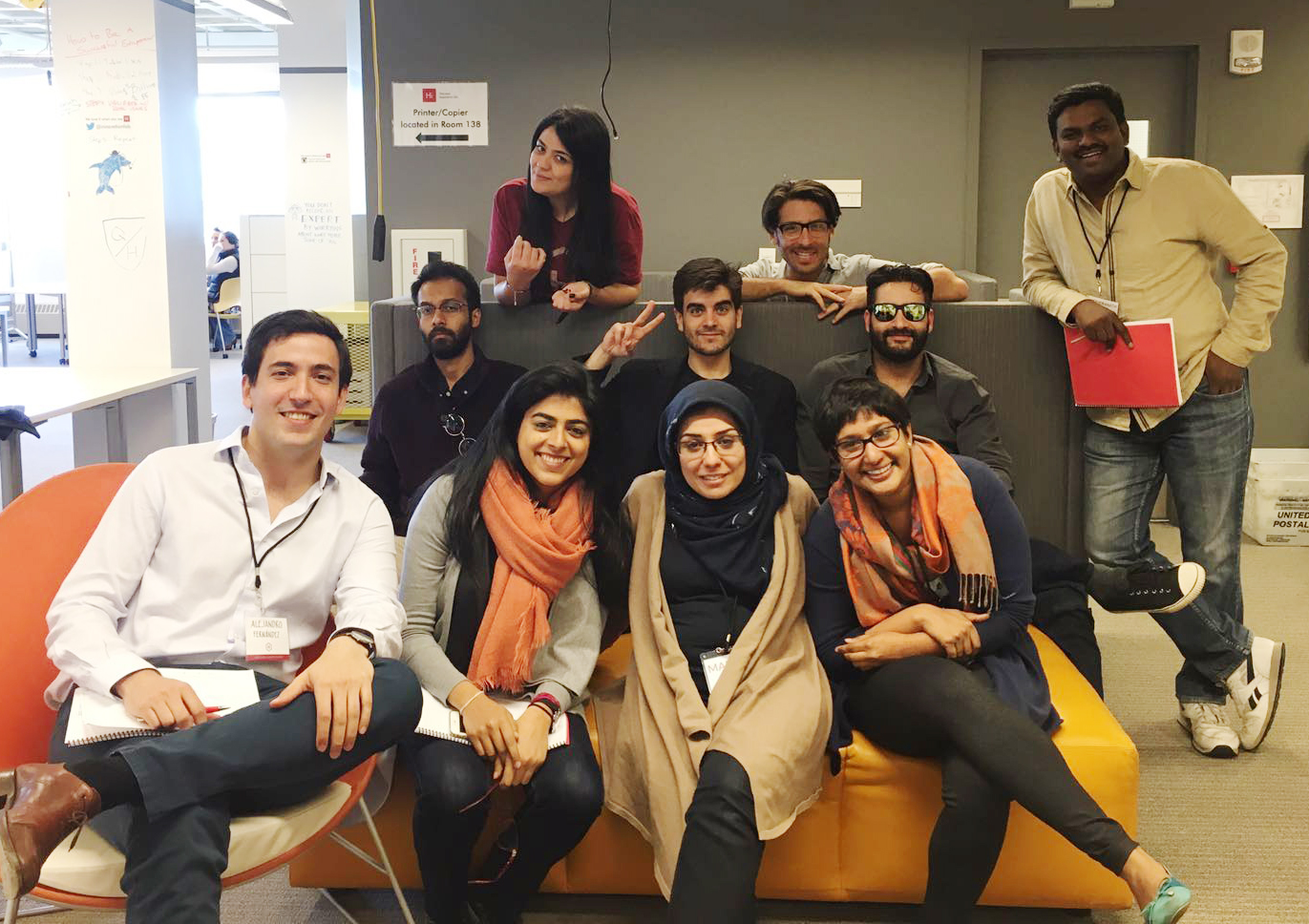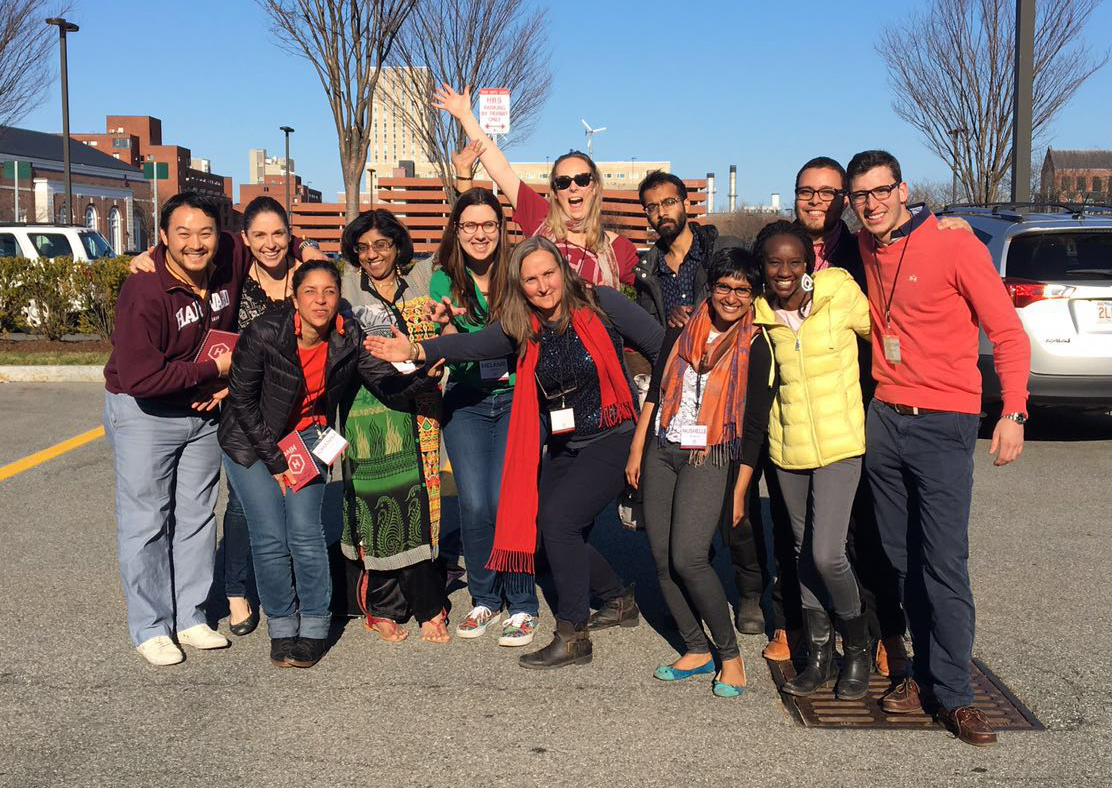This is the first of a four-part series on my experiences at the Hive Global Leaders retreat in Boston.
I gave up my Patriot’s Day weekend to attend Hive, a programme that brings together change-makers from all over the world (a record 155 attendees from 57 countries). The conference/retreat structure was highly unusual; it challenged my assumptions and gave me ample opportunity to reflect on my approach to life and work. While it took me a while to get comfortable with the format, here some of the thought-provoking Hive strategies I liked best.
1. Curated small groups
On the first evening, I found myself sorted into a small group with eight other attendees and a former Hiver who served as our group leader for the weekend. The group leader and five of the eight had a background in architecture like me, one was immersed (as I am) in education and peace-building, and another was a fellow Global Shaper with expertise in film and international development. We were joined the next day by an engineer/MBA also working in higher education. Perhaps because of this purposeful matching of interests, I felt instantly comfortable with my goofy, slightly verbose group. (How comfortable? I cried over my tell-us-about-a-vulnerable-moment story within an hour of meeting them.)

Over the weekend, we returned to our small groups each day for an hour, maybe more, to tear down our experiences and reflect on our goals. Hanging out with them quickly became the highlight of my time at Hive. It was great to learn from the diverse larger group, but as an introvert I know I’m more likely to keep myself accountable to my small group in part because our interests intersect so well. I’m learning more about tribes every day.
2. Buckets of built-in accountability
At first, I was puzzled by the constant sharing — it appeared to waste a lot of time. On the second day, we focused on designing our life by mapping where we envisioned ourselves and charting a path to get there; every time we worked on a question (“What needs do I see in my community?” “What’s holding me back?”) we would then turn to our neighbour and discuss what we wrote.
The 30-page workbook took forever to complete.
But sharing made me realise that my neighbour was working through the same problems I am, and forced me to write something down despite my qualms and hesitations. There was also no skipping ahead, just focusing hard on the question at hand before moving on to the next. Reflecting further in the company of our small groups, submitting a final draft of our goals for framing, and sharing our purpose in 20-second sound bites to the whole group cemented our commitment.
It was an incredible (and fatiguing) investment of time, but I see how simultaneously terrifying and exciting it is to publicly commit to a dream, even if you know you’re going to tweak it next week. In terms of pushing the boundaries of vulnerability, Hive took the cake. That being said, I think this kind of hyper-sharing works much better in a smaller group, as I think 155 might be the largest number of Hivers we’ve had at a single event so far.

3. Sessions that tapped into Hiver talent
Based on past reviews of Hive, I was expecting a number of external speakers who would guide us through the themes for each day (the world, our life, and our work), but this wasn’t the case at all. Instead, we had the Hive core team – Ryan Allis, Nadia Mufti, Palomi Sheth, Adam Pumm – guide us through the morning sessions, and the only external speaker was Tom Chi, whose rapid prototyping session I’ve discussed in another post.
In place of external speakers, the Hive team reached out to us beforehand to ask if we’d be present some creative work, give a talk, or share expertise. Poetry-sharing kicked off each day, and afternoons were filled with 7-8 “unconferences” where Hivers taught on topics in their field. (A related activity was getting people to fill out a list of ‘needs and gifts’ – requests for help from the group, and areas you felt you had expertise to share). I suspect the Hive team is still working out all the moving parts, because these were a mixed bag. Some were boring, some overwhelming, few (if any) were life-changing. (Speaking of which, here’s the DL on the unconference on improv I co-led.)
Hive will have to sort out some of the squidgy logistics for future retreats; unconference leaders didn’t know how long their sessions were going to be until a couple of days before, or how many people would be attending until they pitched to the audience, which meant they were a bit under-prepared. The sessions often tried to fit in far too many lessons into a mere 45 minutes, and the locations didn’t always match the kind of presentation being given.
However.
This is precisely why I think they’re a fabulous idea. Unconferences allowed participants to move away from the conference model of being talked at, really own their areas of expertise, test audience interest based on how they pitched their unconferences, try out presentation styles (fyi kids, 45 minutes is really short, and getting everyone to introduce themselves immediately eats up 20 minutes), and respond on their feet to questions and challenges. Which brings me to the thing I found the most bizarre, and ended up really liking, about Hive in general.
4. A general attitude of prototyping and playfulness
I like playtime. Lots of it. It’s why I do theatre and it’s why I’m disappointed that we only ran out for outdoor games (tag! a crazy group version of scissors-paper-rock! a ridiculous game called nose-jousting!) on the very last morning. In my opinion, we could have shaken up staid old Harvard a lot more with some collective yelling and whooping. That said, Hive takes its digital detoxing and morning yoga and dance parties very seriously (can you tell it’s an SF-based venture?)…and I’m a fan.
While others may have joined in the dancing or nose-jousting with reluctance, I found myself eyebrows-raised about the apparent secrecy of the schedule. There were admittedly things about it that I appreciated: since it was never shared with the attendees, it meant that we had to be present both mentally and physically. At first, I thought it was a cop-out, a way to assume pretended control. Instead, Ryan openly admitted that it meant that the Hive team could change things up based on our feedback, and not be tied to a schedule that simply wasn’t working. The atmosphere was always a little unpolished and scrappy, and the Hive team owned it with a lot of boldness. I like things seamless and streamlined, and it took me a while to admit that perhaps scrappy and rough-edges is better in the long run.

I’ve always been a perfectionist, but I’m also a fan of figuring out ways to get people excited about using their voice, owning their talents, and sharing their expertise. If the Hive team rigidly tried to control every aspect of the weekend, the unconference leaders (and attendees) probably wouldn’t have learned as much as they did about the mechanics of engaging an audience. That takes both courage and generosity.
As Hive tweaks this model, future iterations will, I hope, look like a well-curated weekend of skill-sharing rather than a traditional talking-heads conference, which I find much more interesting (is it a weird coincidence that I read a part of Ivan Illich’s Deschooling Society for class this week?). This attitude diminishes fear of failure and makes it exciting to try new things, to be honest with the people you’re working with, and to wholeheartedly embrace collaboration and constructive critiques. And we really do need more of that.
3 thoughts on “Four effective conference strategies from #Hive7 (that I will probably steal)”